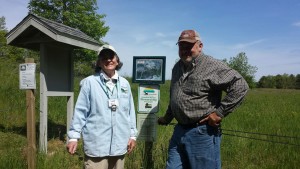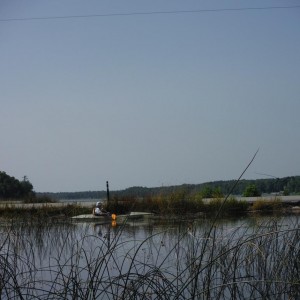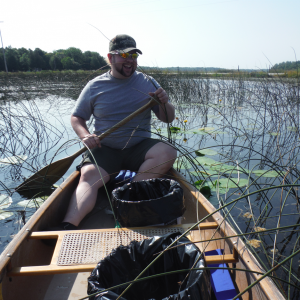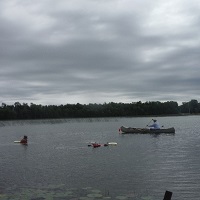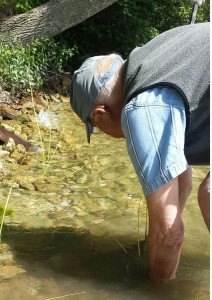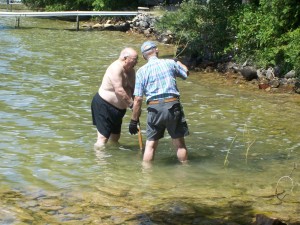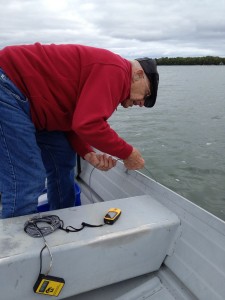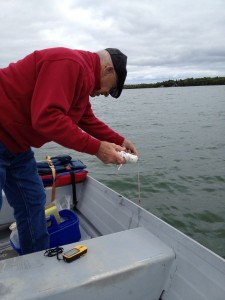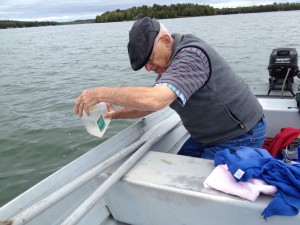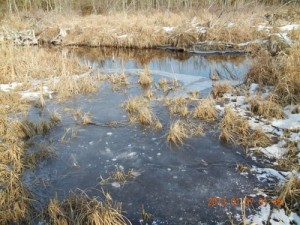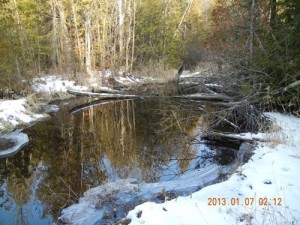On June 19, 2014, Mike Madden and Lucy Klug co-led a Door County Land Trust (DCLT) hike at the recently acquired Heins Creek Nature Preserve. The 74-acre site just south of All Creatures Lane on Highway 57 is a recent acquisition of the DCLT in large part due to the charitable sale by the owners at a significant discount from fair market value.
The dam at the south end of Kangaroo Lake drains to Heins Creek, which leads to Lake Michigan. The fixed concrete dam has a grate resting on top to prevent suckers from entering Kangaroo Lake (see photo of Paul on the dam below). Thanks to the volunteer service of Bill Antholine and family, Tom Anschutz and family, Karl and Lucy Klug, Paul and Marilyn Mahlberg, Mike Faugust and Jennifer Ikeda, and others over the years, the grate is cleaned of leaves, branches and other debris to keep the water flowing over the dam.
The Heins Creek Nature Preserve offers an easy 0.75 mile trail through rolling sand dunes and forest, and of course, along Heins Creek, an important corridor for bird migration. Mike taught us that there is distinctive Native American pottery named for Heins Creek, recognized by the decorative pattern imprinted by hemp rope twisted around a stick. Lucy pointed out various wildflowers and ferns. A special visitor on the hike was the granddaughter of namesake William Hein, mid-19th century farmer and stone mason.
Visit https://kangaroolake.org/explore-kangaroo-lake, Hiking in our Lake Area to learn about this and other hikes around Kangaroo Lake.
